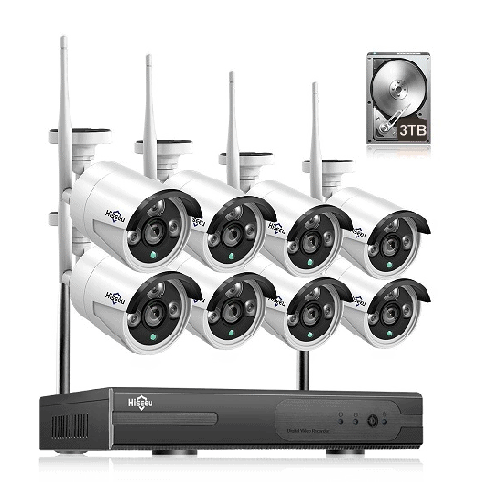The Psychology of Threat Assessment
In today’s complex and interconnected world, the need to assess and mitigate potential threats has become more crucial than ever. Threat assessment is a multidisciplinary field that combines psychology, criminology, and security measures to identify, evaluate, and manage potential risks to individuals, organizations, and communities.
This article explores the psychology behind threat assessment, examining the factors that influence threat perception, the cognitive processes involved, and the strategies used to evaluate and respond to threats effectively.

Understanding Threat Assessment
Threat assessment is a proactive approach aimed at identifying and managing potential risks before they escalate into harmful situations. It involves analyzing various factors, including the context, the individual(s) involved, and the potential harm that may occur. By understanding the psychology of threat assessment, professionals can develop effective strategies to prevent, intervene, and mitigate risks.
Factors Influencing Threat Perception
Threat perception is influenced by a combination of individual and situational factors. Personal experiences, cultural background, biases, and media exposure can shape how individuals perceive and interpret potential threats. Additionally, situational factors such as proximity, familiarity, and context play a significant role in threat assessment.
Cognitive Processes in Threat Assessment
Threat assessment involves several cognitive processes, including attention, memory, and decision-making. Attention is critical in detecting potential threats, as individuals must focus on relevant cues amidst a sea of information. Memory helps in recalling previous experiences and patterns, aiding in threat recognition. Decision-making is involved in evaluating the severity of a threat and determining the appropriate response.

Strategies for Effective Threat Evaluation
To evaluate threats effectively, professionals employ various strategies. These include conducting thorough investigations, gathering relevant information, assessing the credibility of the threat, and analyzing behavioral indicators. Collaboration among different stakeholders, such as law enforcement, mental health professionals, and security experts, is crucial for comprehensive threat evaluation.
The Role of Threat Assessment in Various Contexts
Threat assessment is applicable in diverse settings, including cybersecurity, law enforcement, workplace security, schools, and public spaces. In each context, professionals tailor their approach to the specific risks and challenges present, aiming to prevent and mitigate potential harm.
Psychological Profiling in Threat Assessment
Psychological profiling is a valuable tool in threat assessment. It involves analyzing an individual’s personality traits, behavior patterns, and psychological state to identify potential risks. By understanding the psychological profile of a person, threat assessors can gain insights into their motivations, intentions, and potential for violence.
Threat Assessment in Cybersecurity
In the digital age, cybersecurity threats have become increasingly prevalent. Threat assessment plays a crucial role in identifying and mitigating potential cyber risks, including hacking, data breaches, and online fraud. Professionals utilize advanced technologies and behavioral analysis to assess cyber threats and develop effective preventive measures.

Threat Assessment in Law Enforcement
Law enforcement agencies rely on threat assessment to identify potential risks to public safety. By evaluating behaviors, intelligence, and available information, law enforcement professionals can assess the credibility and severity of threats. This enables them to allocate resources effectively, prevent crimes, and protect the community.
Threat Assessment in Workplace Security
Workplace security is a significant concern for organizations. Threat assessment in the workplace involves identifying and evaluating potential risks such as employee conflicts, harassment, or violent incidents. By implementing threat assessment protocols and promoting a safe work environment, organizations can proactively address and mitigate threats.
Threat Assessment in Schools and Educational Institutions
Ensuring a safe learning environment is essential in schools and educational institutions. Threat assessment helps identify potential threats, including bullying, violence, or targeted attacks. By implementing threat assessment teams, training staff, and fostering a supportive atmosphere, schools can respond promptly and effectively to potential risks.

Threat Assessment in Public Spaces
Public spaces, such as malls, stadiums, or transportation hubs, face unique security challenges. Threat assessment in public spaces involves analyzing crowd behavior, surveillance systems, and potential vulnerabilities. By conducting comprehensive threat assessments and implementing appropriate security measures, public spaces can enhance safety for visitors and prevent potential threats.
The Importance of Collaboration in Threat Assessment
Effective threat assessment requires collaboration among various stakeholders, including law enforcement agencies, mental health professionals, security experts, and community members. Sharing information, expertise, and resources fosters a holistic approach to threat assessment, ensuring comprehensive evaluations and timely interventions.
Ethical Considerations in Threat Assessment
Ethical considerations play a crucial role in threat assessment practices. Professionals must balance the need for security with individual rights, privacy, and due process. Adhering to ethical guidelines and legal frameworks ensures that threat assessments are conducted in a fair and respectful manner.
The Future of Threat Assessment
As technology advances and new threats emerge, the field of threat assessment continues to evolve. Artificial intelligence, data analytics, and predictive modeling are expected to play an increasingly significant role in identifying and mitigating potential risks. Continuous research, training, and adaptation to new challenges will shape the future of threat assessment.
Conclusion
Threat assessment is a vital process that combines psychology, criminology, and security measures to identify and manage potential risks. By understanding the psychology behind threat assessment, professionals can enhance their ability to detect, evaluate, and respond to threats effectively. Collaboration, ethical considerations, and staying abreast of emerging trends are key to ensuring the success of threat assessment practices.
FAQs (Frequently Asked Questions)
What is threat assessment?
Threat assessment is a multidisciplinary approach that involves identifying, evaluating, and managing potential risks to individuals, organizations, and communities.
What factors influence threat perception?
Threat perception is influenced by individual factors such as personal experiences, cultural background, and biases, as well as situational factors such as context and proximity.
How do cognitive processes contribute to threat assessment?
Cognitive processes like attention, memory, and decision-making play a crucial role in threat assessment by helping individuals detect, recognize, and evaluate potential threats.
How can threat assessment be applied in different contexts?
Threat assessment can be applied in various contexts such as cybersecurity, law enforcement, workplace security, schools, and public spaces, adapting to the specific risks and challenges present.
What is the future of threat assessment?
The future of threat assessment lies in advancements in technology, including artificial intelligence, data analytics, and predictive modeling, which will aid in identifying and mitigating potential risks more effectively.
Disclaimer
Certain content that appears on this site comes from Amazon. As an Amazon Associate we earn from qualifying purchases. Read full Disclaimer Here!






